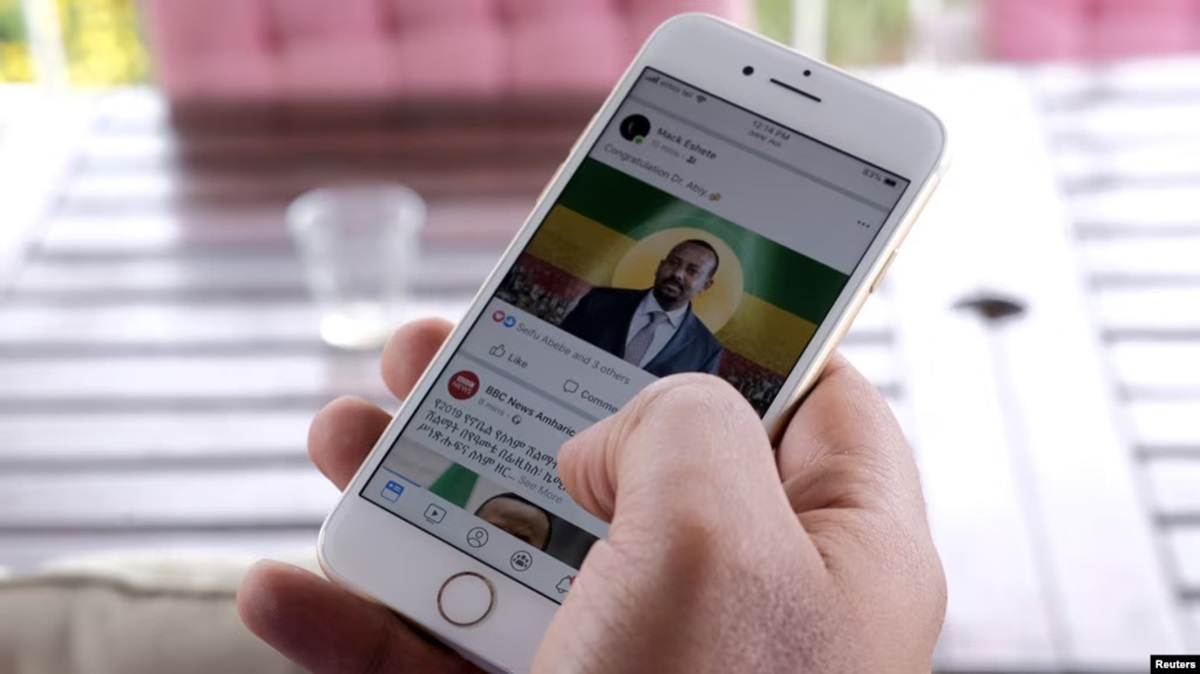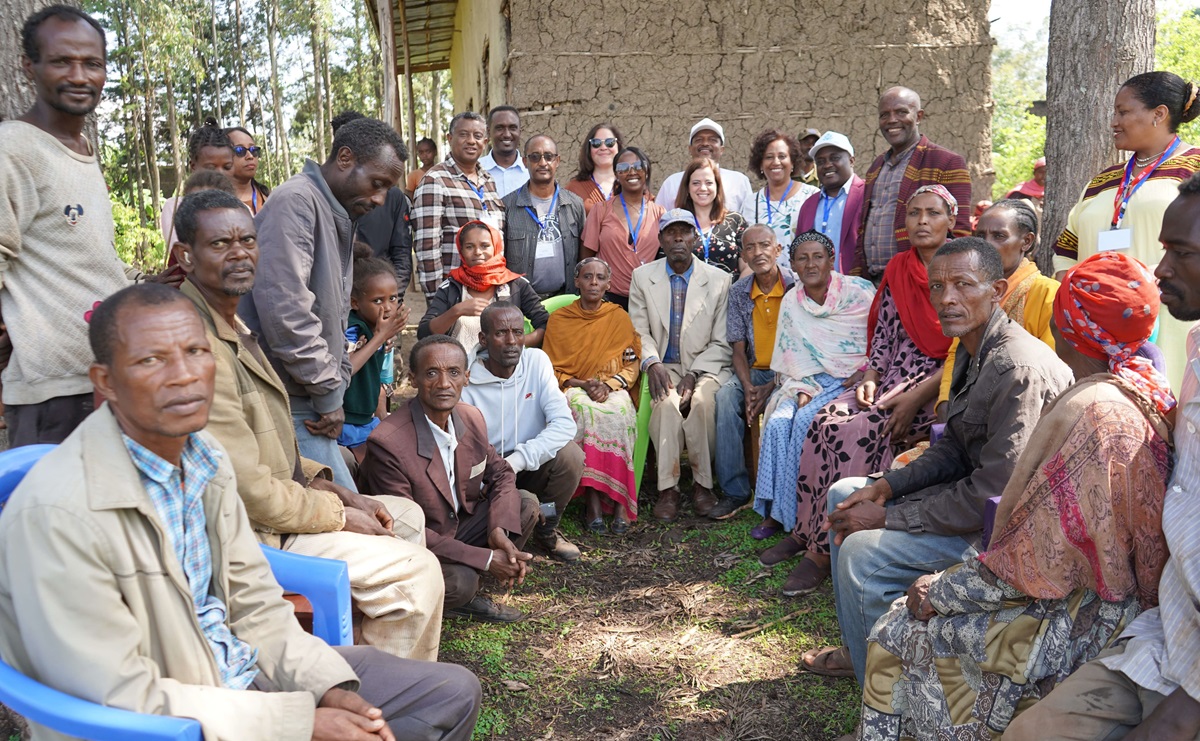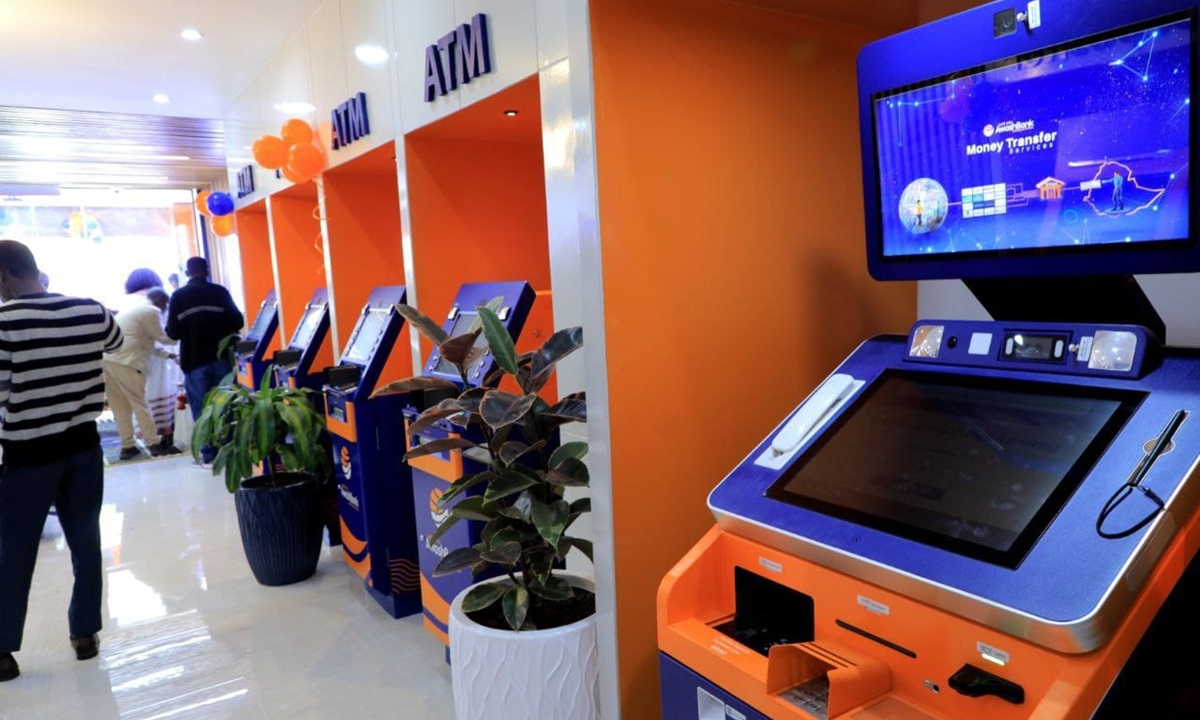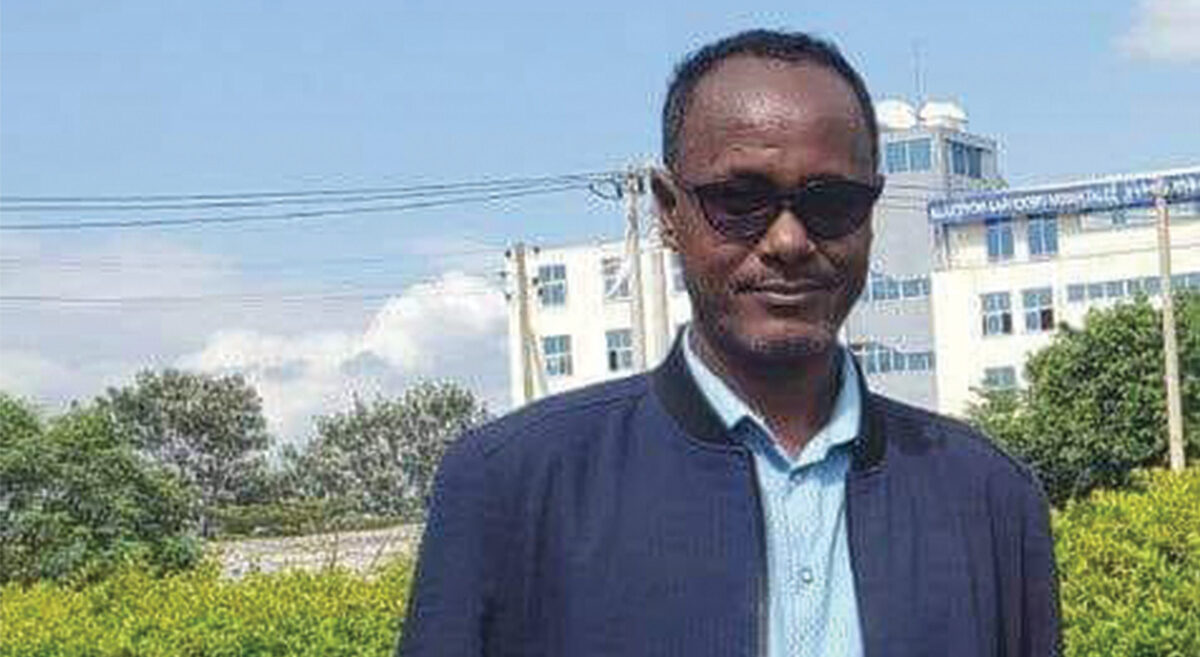Commentary -Transformation from within: hope or mirage? The OPDO-ANDM alliance and the prospect of reform
Tsegaye R Ararssa*
1 – Introduction
Addis Abeba, November 22/2017 – No time has been more eventful in Ethiopia than the one we are living in. Years of peaceful protests in Oromia, later also augmented by flashes of resistance in Konso and the Amhara region, seem to have shaken the regime to its core and have brought the country to a crossroads once more. Many have started to wonder if this is going to be an opportunity for the regime to, finally, transit to democracy and for the state to, at last, transform itself into a fairer, a more just, a more equitable, and a more peaceful—if only redeemed—polity. The recent gesture of the Oromo People’s Democratic Organization (OPDO) to reach out to the Amhara National Democratic Movement (ANDM) in the spirit of solidarity and collaboration has occasioned a renewed hope in the possibility of this much sought after transformation. What does this gesture of solidarity promise? Will the democratic transformation promised in these gestures and the democratic aspirations expressed throughout the season of the protests be delivered, or will they remain a mirage? Prospectively, beyond these gestures of alliance and the populist rhetorical flourishes in favor of democratic change in the two regional states, what can be done to see to it that the promise is delivered, or the hope is turned into reality? The following is a reflection pointing in that direction.
2 – The OPDO-ANDM Alliance: What does it mean
The OPDO-ANDM gesture of alliance is viewed by many as heartening. To be sure, more than anything else, it is a political alliance quickly put together to edge out TPLF in the raging power struggle within the EPRDF coalition. Yet, it has emboldened the possibility of harvesting some democratic dividends if – beyond the parties – the elites of the two populous regional states start to work together in the spirit of ensconcing democracy and transforming the state-society relations in the country. From the side of the OPDO, beyond and above sending the message to the hitherto dominant Tigray People’s Liberation Front (TPLF) that the OPDO is not alone in resisting the former’s patronage, it is also an attempt to calm down the Amhara elite’s eternal suspicion and fear (albeit largely irrational and groundless) of the (perceived) ‘Oromo threat to the unity and territorial integrity of Ethiopia.’ Regardless of the tacit endorsement of the (warped) attitude that presents the Amhara elite as the sole guardian of the ‘unity’ and integrity of the country, it is a gesture that also indicates the resolve of this generation of Oromos to take the bigger responsibility for the larger country in trying to bring others to (a better, fairer, and more inclusive version of) the Ethiopian fold.
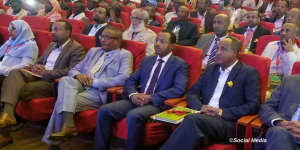 Amhara regional state President Gedu Andargachew and Oromia regional state president Lemma Megerssa (Both seated center)
Amhara regional state President Gedu Andargachew and Oromia regional state president Lemma Megerssa (Both seated center)
The alliance can also be taken as an attempt on the part of the OPDO to do their side of the responsibility and beckon others to do their part if they so choose. The other – regarding political ethics implied in this gesture has also a far-reaching consequence for the future of the country. As such, OPDO’s carefully ‘calculated’ choice to focus on and consider others’ fears rather than dwelling on the injustice inflicted upon their people, now and in the past, is a signal that they want to be larger than their resentment of their ‘present-absence’ in Ethiopia thus far. Their act of claiming the country’s problems (and natural endowments) as their own (saying “Xaanaan keenya” – Tana is ours) – or even the more reckless rhetorical excess in saying that they are “addicted to ‘Ethiopianism’” – is suggestive of the place of the Oromo in the Ethiopia to come. In a sense, this could as well be a way of ‘presenting’ (or bringing back to the present) those who have so far been rendered absent. It is a way of making themselves legible in the political vernacular of the country to which they have been illegible so far.
For ANDM, to accept OPDO’s initiative, just as much as it is a political tactic of edging out TPLF in its own bit of the power struggle within the EPRDF, signals the choice on the part of the Amhara elite to move on, and to do so by accepting the present reality on the ground. It is also a recognition that the demands of their people at the grassroots level are legitimate and need to be met as such only democratically. They seem to have finally realized that in order to hear and concede to the democratic demands of the people, they first need to realize democracy within their party (EPRDF) in which TPLF has so far been the sole maker and breaker of the political game. They seem to understand that common sense—and elementary understanding of democracy as decision-making by majority vote – suggests that the parties with larger members and larger potential constituencies deserve more say and hearing than they have been getting so far. And they do not see a political overreach in raising this simple question of fair hearing and treatment both in Oromia and in their own region. Of course, the implication is far-reaching for their people, their region, and the larger country. The demand simply unleashes “the logic of equality”[1] in the political party[2] thereby signalling the beginning of transformation from within.
Consequently, both OPDO and ANDM seem to have finally realized that in order to effectively respond to the democratic impulse hitting at their doors daily from outside (from their peoples), they need to answer the inner democratic urge from within, bypassing the hierarchic tradition of EPRDF politics that made them subservient so far.[3] If seen in this light, the alliance is already a signal for more democratic mandate for these hitherto ‘junior partners’ of the TPLF to act more autonomously with a larger space to maneuve. At another level, the alliance may be seen as ‘an immanent critique’ of the state on behalf of democratic transformation. But it is more. It may be a sign that effective democratic transition and state transformation may finally be coming from a corner least expected to be a site of democratic performance, i.e. from within (i.e. from within the constituents of the EPRDF machine), rather than from without (i.e., the opposition political organizations cum the pressures of the international community).
The question now is what can be done to make this hope of transformation real? What of this ‘inner reform’ can be done right in order to bring about the much sought transformation? If this gesture of inter-party alliance is going to yield anything more substantive, what should we expect them to do in the near future?
3 -What is to be done? And Quo Vadis, EPRDF?
What should be done? And where should they start it? Top in the to-do list is the introduction of democracy to EPRDF as a party. Or, more precisely, the OPDO-ANDM alliance must start to push back to the undemocratic instincts of TPLF, which must be tamed and placed in proper legal check. That should be followed by taking position of prominence to seek more mandate in Parliament. What remains after that, as we will see in the sections to follow, is a mere concatenation of this basic premise of democratization.
3.1 Democratize EPRDF, or Free it from the TPLF Suzerainty
The first task is to push this democratizing impulse in the two organizations to the level where it can effectively democratize the broader EPRDF internally. That means to enhancing and reinforcing internal democracy within the coalition. Which means the parties with larger membership and larger constituency base ought to be given the voices and the votes they deserve in proportion to the population they purport to represent. This in turn leads to the democratization of the key political institutions such as the Federal Parliament (the House of Peoples’ Representatives, alias HPR)[4]. The parties that have the larger number of seats in the Parliament will come to seize positions of prominence. This makes the OPDO-ANDM alliance a veritable force in the formation of a new government chiefly from the ranks of the OPDO and ANDM but also the SPDM and TPLF (in proportion to the number of their seats and in the spirit of inclusiveness). In this process, they may choose to assign the premiership to one of their members or keep it in the hand of the SPDM in the interest of continuity and of not alienating the SNNPS all too quickly [5] (All this needs to be done through an intense process of negotiation keeping an eye on the ultimate democratization of the entire country.)
3.2 Free the Parliament and the Government from TPLF domination, but keep the Government accountable to the Parliament)
Once the OPDO-ANDM alliance achieves position of prominence in the Parliament, what follows is freeing the Parliament itself from TPLF’s repressive – and arguably unconstitutional – rules of procedure that muzzled Members of Parliament (MPs) in the name of ensuring party discipline and practicing ‘democratic centralism’ (which in practice has more of centralism than democracy). They must understand that MPs know their priorities in the hierarchy of their loyalties: to their conscience, their constituency, their country, and their party in that order. The MPs in turn must ensure the accountability of the Government to the Parliament in line with the constitutional provision that the HPR is “the highest authority”[6] in the country thereby effectively subordinating the Executive to the Legislature without prejudice to the principle of ‘separation of powers’ afforded in the Parliamentary system that ours is.
3.3 Free the People from Fear: Restore order and the ‘rule of law’
Next, the newly configured Parliament should resolve to lift the TPLF-imposed rule by Command Post by bringing an end to the undeclared state of emergency. It must also resolve to restore inter-State peace, especially around the borders. It should resolve to reinstate and/or resettle the over 600, 000 persons evicted from the Somali-Oromia borders and (from the Somali region).[7] In this, they should demonstrate a compassionate governance the time demands.
3.4 Demilitarize the politics, depoliticize the army
In a first gesture of demilitarizing the politics – and depoliticizing the army in the long term – in Ethiopia, they should call the army back to its barracks. They should make sure that the forces that have perpetrated violence and atrocities on the people in the course of the most recent protests are made accountable politically, administratively, and legally. The leadership and members of the ‘Liyu Police’ that committed massacres should be brought to justice. This includes the President of the Somali National Regional Government, Abdi Iley, and the leaders of the Federal Army that worked in tandem with the ‘Liyu Police’ to commit the aggression on Oromia. The institution of the ‘Liyu police’ should be disarmed and disbanded.
3.5 Animate constitutionalism
They must animate the constitutional institutions of dispute settlement in order for them to respond effectively to disputes over borders (Oromia-Somali; Benishangul-Oromia, Afar-Amhara, etc), local self-rule (e.g., Konso), identity (e.g., Walqayit, Qemant, Matakkal, Oromos in Harari Region, etc), and other forms of internal self-determination (e.g., the long-standing Sidama demand for Statehood in the Federation, of the Gamo to its own Zone/Special District, of the Omo Valley District, etc). This requires the active engagement of the House of Federation (and its Council of Constitutional Inquiry), the Conflict Departments of the Ministry of Federal and Pastoralist Affairs, and even the regular courts (over justiceable matters and cases that need the activation of legal-judicial accountability). It is also important to start rethinking the institutional and procedural arrangement for constitutional interpretation. In this regard, it is important to consider the formation of a constitutional court that serves a more effective adjudicator over cases and a more neutral umpire of the Federation.
3.6 Free political prisoners, repeal repressive laws, counteract corruption
Extending the work of restoring the rule of law, the OPDO-ANDM alliance in Parliament must resolve to free all political prisoners. They should also resolve to repeal all repressive laws or the repressive provisions thereof (on the basis of legitimacy of purpose, necessity, rationality, proportionality, etc). In particular, they should revisit the overtly counter-democratic laws (counter-terrorism laws, the rules on media freedom, the laws on political parties and civil society associations—all of which have long stifled freedom of speech, expression, press, assembly, and association). They should also repeal the list of political parties proscribed as ‘terrorist organizations’ purely on political grounds in order to silence dissenting voices.[8] In the interest of further strengthening the ‘rule of law’ (forgive the Rule of Law fetishism here!) and ensuring a degree of economic justice, they should activate the antic-corruption commission in order to prosecute corrupt officials, business people, and their associates who have been complicit in a variety of illicit ‘investment and trade’ activities. The Commission must be put to a rehabilitated use of pursuing justice rather than attacking political dissidents as such.
3.7 Perform compassionate governance
The first act of compassion as a government is for it to extend humanitarian assistance to people displaced from hot spots of recent conflicts (over 600,000 in Oromia alone). People must get shelter and basic necessities. They should be brought out of the military training camps they have been put into. They should be provided with basic means of survival. But they should also be given their life back—be it where they have been evicted from or in a place of their choice where basic social services are effectively provided. The Federal Government has so far been conspicuously absent from the scene in regards to reaching out to the displaced—save for the interesting exception of the visit made by the Deputy Prime Minister (also from ANDM, not entirely coincidentally) to the temporary rehabilitation camp in Hamarressaa.
The wider society, especially in Oromia and Amhara regions, has been affected by dislocation that resulted from the protests. Thousands have been subjected to mass arrest, detention in concentration camps, tortures, fake charges, and overtly political trials. This has greatly put families in economic distress as it is mostly the breadwinners that are sent to jail or are forced into exile. Mechanisms have to be devised immediately in order to counteract the distress, to ameliorate the increasing precariousness of life, and to heal the fracture.
Moreover, in terms of performing compassionate governance and bringing about more human security – and also in terms of responding to the demands of the protests – all land grab schemes must be brought to a halt. The draft proclamation on the so called National Master Plan must be abandoned until the current state of uncertainty and insecurity subsides. All persons evicted from their land must be restored to their plots and/or given a replacement house and/or farm as appropriate.
3.8 Address all the political demands of the protestors
In Oromia, addressing the demands of the #Oromoprotests is a matter of high priority. The demands are clearly articulated in the course of the last three years. No amount of cosmetic change, including in styles (such as new styles of doing public relations and communication via social media or one’s own conventional media), or a change in rhetoric, can satisfy an awakened public.[9] The questions of abbaa biyyumma (the entitlement to rights and benefits in one’s own country as citizens), of equitable resource distribution (and protection from an unfair tax), access to economic facilities (e.g. to land, mineral resources, water, health, and road infrastructure) and social opportunities (e.g. education), linguistic justice (having Afaan Oromo as one of the working languages of the Federal Government), release of political prisoners, repeal of unjust administrative and economic laws and policies (such as the Oromia urban development law, the so called Addis Abeba Master Plan, etc), more self-rule at the regional level [or non-interference of the TPLF overlords from the ‘center’], remain unanswered. The regional government should also work more expeditiously to ensure the Oromo interest in Finfinnee (the so-called constitutional ‘special interest of Oromia over Finfinnee/Addis Abeba’).[10] The fact that the economy has come to a standstill already must be taken into consideration. Consequently, next to pacifying the country by ‘getting the politics right’, the government must inject a degree of dynamism to the economy by stabilizing the currency. Without it, the precariousness of life gets only worse and the suffering of the poor will continue to rise. Price hikes must be brought to a halt. Jobs need to be created. Livelihoods must improve. Conditions necessary for enhanced productivity (i.e., stability) must be established.
4. Towards a democratic transition and a deeper transformation
Simultaneously, the government must start a comprehensive dialogue, engagement, and negotiation in good faith with all political parties and stakeholders to ensure that there will be a genuinely democratic election in 2020. In the course of this dialogue, they should not be afraid of demands for constitutional amendments, or revisions, needed for an effective transition of the politics to democracy and transformation of the polity and its state for good. The above-listed activities will hopefully contribute to the democratization of the politics. The imperative of state transformation requires more work. Among other things – and perhaps above all – it demands that we empower the already mobilized people to assert their newly gained agency as they seek to forge a future of their own choice. Given we are working within this reformist framework for change, this demands nothing less than what, elsewhere, I referred to as “a redemptive constitutional practice.”[11]
5. Conclusion
Where does this leave EPRDF? Obviously, these otherwise simple recommendations are hard for the TPLF-led EPRDF regime to accept and implement. Considering the privilege the TPLF enjoyed so far, the vested interest their political, military, and business class currently have, and the powers their elite will have to relinquish in the democratic dispensation to come, this is only to be expected. This means that the OPDO-ANDM alliance must be creative in identifying ‘incentives’ that can ease the TPLF in to their prospective reform package. Some of the measures (such as freeing political prisoners and repeal of the list of ‘terrorist organizations’, for example) may be viewed as a threat even to the reformist elements in the OPDO-ANDM alliance. But this is the only best choice they have. This is the best deal they can get. By way of incentives for their reformist measures, the OPDO and ANDM – apart from winning concessions for the suffering public in their currently itchy constituencies – can take comfort in the legacy of being remembered as the political parties that will have made the birth of democracy possible in Ethiopia.
In this way, they can re-invent themselves (as the OPDO seems to be doing lately, at least in rhetoric) and become agents of democratization, or they may choose to perish as a party of the last authoritarian regime in the country, especially in the event that they fail to take these modest reformist decisions and actions. Their refusal to reform – as they are often bent on doing – will further deepen the current crisis and confront them, and the country, with a much bleaker future. We just hope that they choose to push for reforms in order to make themselves relevant to the future! Otherwise, the hope of transformation may as well become a mirage. And the flicker of hope seen in this new OPDO-ANDM alliance and their populist rhetoric in their own respective regions may be an illusion, and their words just words. AS
ED’s Note: The first draft of this article was already published on the writer’s Facebook page. It is republished here with more details than the first draft, corroborating links to previous stories and end notes.
*Tsegaye R Ararssa can be reached at tsegayenz@gmail.com.
End notes
[1] The words are from Robert T. Dahl, On Democracy. New Haven, CT: Yale University Press, 2001. (East-West Press edition), p.10.
[2] The most immediate change this calls forth is the change in the voting structure of the Executive Committee of EPRDF in which all four members of the ‘coalition’ have equal votes irrespective of the difference of the constituencies they (claim to) represent.
[3] The hierarchy in the party’s practice is often ‘explained and justified’ by each member organization’s “years of participation in the struggle to depose the Derg,”according to which TPLF sits at the helm followed by ANDM, OPDO, and SPDM in that order.
[4] According to art 56 of the Constitution, “[a] political party, or a coalition of political parties that has the greatest number… shall form the Executive and lead it.”
[5] The current Prime Minister, Hailemariam Desalegn, comes from the SPDM.
[6] Art 50 (3).
[7] There are reports that several other people are also evicted from their homes and land in Oromia as a consequence of the contrived ‘ethnic conflicts’ agitated—and orchestrated in a couple of places–by the TPLF agents. Needless to say, these evicts also need to be protected, given relief, returned to their homes and/or given back their lives.
[8] Oromo Liberation Front (OLF), Ogaden National Liberation Front (ONLF), and Ginbot 7 are the most outstanding examples of such parties.
[9] The efforts of the Government Spokespersons of Oromia and Amhara National Regional States, Ato Adissu Arega and Ato Nigusu Tilahun, respectively, in engaging the public through the mass media, including on facebook, while commendable in terms of enhancing freedom of information and winning public trust, is not enough to meet the substantive demands expressed in the course of the protests.
[10] This demand is based on the constitutional provision of art 49(5). A draft proclamation prepared by the HPR was scheduled “to be discussed with the public.” The discussion—which in principle should engage the Oromo public as well as the Finfinnee residents—is yet to be conducted.
[11] Tsegaye Regassa, “The Making and Legitimacy of the Ethiopian Constitution,” 23 (1) Afrika Focus (2010), 85-118, esp, 111-113. Also, Tsegaye R. Ararssa, “Fractured Constitutional Beginnings and the Hope of Redemption,” (forthcoming 2017).


